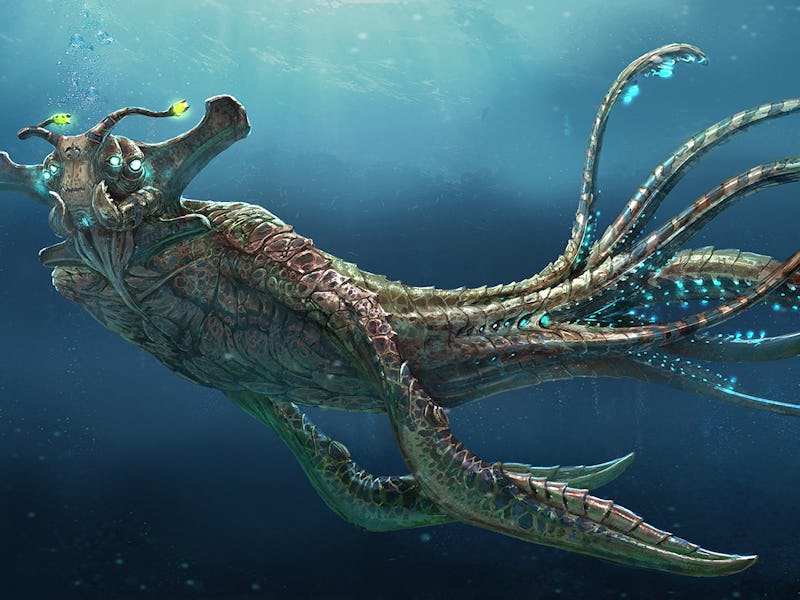'Star Wars: Clone Wars' Concept Artist Pat Presley on His Inspirations
"Design has to serve the story visually, but it also has to work, because animation shows tend to go back to that same environments."

The following article by Victor Fuste originally appeared on Zerply, the platform for finding creative production talent.
With over 12 years of experience, Pat Presley has done stunning design work on projects like “Star Wars: Clone Wars” and “Star Wars: Rebels.” Find out what inspires him in our spotlight interview.
You’ve worked as a Concept Artist on projects like Star Wars: The Clone Wars and Star Wars: Rebels. What do you think it is about the Star Wars universe that is so appealing and has allowed it to endure? What is it about that particular sandbox that gets the creative juices flowing?
I think the appeal is very simple. I believe Star Wars is for children. For adults, It takes you back to a much simpler time of childhood and its propensity for adventure. And as a kid, who wouldn’t want to jump into a spaceship with a Wookiee and save the galaxy? At the same time, it also took inspiration from diverse sources like Arthurian legend, eastern mysticism all the way to Western movies and WWII. This, I think, allows for endless creativity.
When you’re working on a project with such a strong following as Star Wars, what things to you have to put out of your head before you can get started?
Nothing. Because you already stand on a shoulder of giants like George Lucas, Ralph McQuarrie, Joe Johnston and Doug Chiang and countless other artists, you usually have a pretty clear vision where you should go in this universe.
Let’s talk about “Battlemilk.” Can you tell us about how that project came about and what your goals were? (What is the best link to direct people to so they can buy the book?)
Battlemilk grew out of Lucasfilm Animation Design Department. It started with the guys wanting to do something creative outside of studio work. It began with 4 designers and each successive volume they invited more artists to join the group, I joined the team on Vol. 3. At first, it was a lot of anything goes conceptually. Then around Vol. 2 and 3, we became more narrative-driven and morphed into a world-building project. It’s great being a part of the collective, because it allows me to be creative in a different way and challenges me to do something more personal. Currently we are discussing future plan for the team and we look forward to share it with everyone soon.
You can get a personalized copy with original sketch by contacting me through my website, but you can also get the book through major outlet like Amazon as well.
What do you find tends to be the toughest part of your job? Conversely, what’s the most satisfying? Talk a little about your process.
The toughest part about my job is usually finding the sweet spot of making the design “works” in the narrative as well as the look. Not only the design has to serve the story visually but it also has to work, because animation show tends to go back to that same environments, sets or vehicles with characters interacting with that set. Sometime it’s as simple as forgetting to put a control panel or a ladder in a cockpit and sometime it’s as complicate as figuring out the interior of a certain ship re-orienting itself in flight mode. I got quite a few surprises making big and small mistakes on the shows. Design is always a learning process.
There are two most satisfying and rewarding things about my job. Seeing your design becomes a toy or a Lego set is enough to put a smile on your face. It’s any kid’s dream. The other thing is less tangible. It’s the people. You make lifelong friends working in the industry. I was lucky to be working out at the ranch during my time at Lucasfilm and met some incredible people. It felt as if we had a community there, a family of sort.
Because of my architecture background, I tend to approach every assignment as a problem that needs solving. I feel it’s the best way to approach design. You identify the problems ( like what is the purpose of this spaceship for example?), then gather information ( tons of references?) and make design decision based on that through different artistic techniques. I treat painting and drawing skill similar to learning languages. They are ways of communicating my ideas and solutions.
What artists have been your biggest inspirations? What do you do to stay inspired every day?
The ones that made the most impact on me are Ralph McQuarrie, Moebius, Syd Mead and H R Giger. I identify their work with different sides of me.
Obviously when you work on Star Wars, Ralph is always a huge inspiration. I had a pleasure of meeting him while I was still at the ranch. Doug Chiang is also an inspiration as well as an influence on my career. I corresponded with him while I was still in college right before Star Wars: Episode I came out. During that time, there was no concept art community or online information as it is today, Doug gave me many valuable advice on the industry as well as how to improve my skills. So it was great that I had a chance to work with him in the recent year.
This article originally appeared on Zerply.